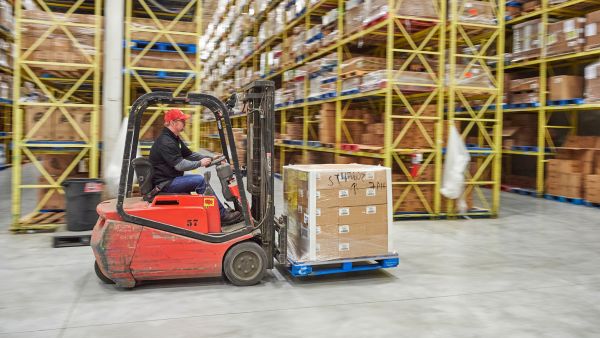Dual Duty: Why Today’s Drivers Also Need Forklift Training
August 20, 2025

The role of the professional driver is evolving. As companies streamline operations and reduce headcount, a growing trend has emerged: drivers are increasingly expected to do more than they used to. Many are now tasked with operating forklifts to load and unload their own trailers—a shift that brings both opportunity and risk.
This “dual duty” model—where drivers split time between the cab and a forklift—can boost efficiency and reduce downtime. But it also introduces new safety and compliance challenges.
Operating a forklift is not a simple add-on to a driver’s responsibilities. It’s a specialized skill that requires proper training, certification, and ongoing evaluation.
The Risks of Undertraining
Without adequate training, dual-duty drivers may put themselves, their coworkers, and their cargo at risk. Forklift incidents can lead to serious injuries, costly damage, and OSHA violations.
Likewise, a driver who isn’t fully trained in safe loading practices may compromise the stability of a trailer, increasing the risk of accidents on the road.
It’s not just about safety—it’s about compliance. OSHA requires that all forklift operators be trained and evaluated before they operate equipment. If a driver is asked to hop on a forklift without proper certification, the company could face hefty fines and in the event of an incident.
Proper training includes building a culture of safety, reducing liability, and improving operational efficiency.
Efficiency Through Expertise
When drivers are properly trained in both roles, the benefits are clear. They can load and unload faster, reduce wait times, and minimize the need for additional warehouse staff.
They’re also better equipped to spot potential hazards, secure loads correctly, and communicate effectively with warehouse teams.
But this level of performance doesn’t happen overnight. It requires hands-on, scenario-based training that reflects the real-world challenges dual-duty drivers face every day.
Hands-On Driver and Forklift Training
We recognize the growing need for dual-duty drivers to be proficient both behind the wheel and on the warehouse floor. That’s why we offer a comprehensive Driver and Forklift Hands-On Training Program.
This program goes beyond basic instruction—it’s a fully immersive experience designed to prepare drivers for the real-world challenges of operating both vehicles and forklifts safely and efficiently.
Key features of the training program include:
- Tailored curriculum: Training is customized to reflect your specific vehicles, cargo types, operational risks, and regulatory requirements.
- Interactive, hands-on learning: Drivers engage in practical exercises that simulate actual job scenarios, ensuring they retain critical safety and operational knowledge.
- Dual certification: Participants receive OSHA-compliant forklift certification and professional driver training, meeting both DOT and workplace safety standards.
- Experienced instructors: Our trainers bring decades of experience in transportation and warehouse operations, offering insights that go beyond the textbook.
- Lesson retention strategies: Adult learning methods and the innovative Narrative Drive™ approach help reinforce key concepts through “what if” scenarios and real-time decision-making.
Whether your team includes CDL, non-CDL, or yard drivers, our training ensures they’re equipped to handle the demands of dual-duty roles with confidence and competence.
The Bottom Line
As the logistics industry continues to evolve, so must the people who keep it moving. Dual-duty drivers are becoming the norm, not the exception.
Investing in proper training isn’t just a safety measure—it’s a smart business decision that protects your people, your product, and your bottom line.
Contact us today to learn more about our hands-on programs and how we can help your workforce stay safe, skilled, and compliant.